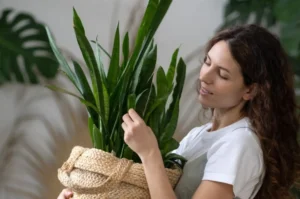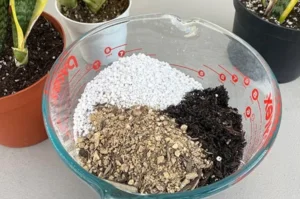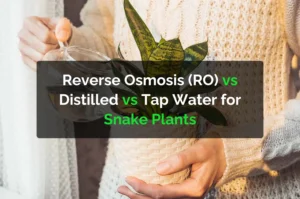Snake plants (Sansevieria) are known for their resilience and air-purifying qualities. However, if you notice brown spots appearing on the leaves, it could be a sign of underlying issues that need attention. Identifying the cause early can prevent further damage and keep your plant healthy.
Understanding the Causes of Brown Spots
Brown spots on snake plants are usually caused by overwatering, fungal infections, pests, or excessive sunlight. Overwatering leads to root rot, creating the perfect environment for fungal growth, while pests like thrips or spider mites can damage the leaves. Direct sunlight or sudden temperature changes can also stress the plant, causing discoloration. To prevent brown spots, ensure proper watering, maintain good airflow, and keep your plant in indirect light. Here are some common reasons:
1. Fungal Infections
- Alternaria: A common fungal infection that thrives in high humidity and poor air circulation.
- Brown blotch: This fungal disease creates dark brown, water-soaked lesions on leaves.
- Brown spot: Often caused by excess moisture and high temperatures, leading to rapid spread and infectivity.
2. Improper Watering Schedule
- Overwatering can cause root rot, leading to leaf death.
- Underwatering results in dry, crispy brown spots on the leaves.
3. Environmental Stress
- Excessive sunlight can scorch leaves, causing brown spots.
- Poor air circulation increases moisture retention, encouraging fungal growth.
Remedies and Prevention Techniques
1. Adjust the Watering Schedule
- Water only when the soil is completely dry to prevent overwatering.
- Reduce watering in winter as the plant enters dormancy.
2. Improve Air Circulation
- Ensure good airflow around the plant to prevent fungal growth.
- Avoid placing the plant in overly humid areas.
3. Leaf Pruning
- Remove infected or dead leaves to prevent the spread of plant disease.
- Use sterilized pruning tools to avoid cross-contamination.
4. Apply Fungicide
- If fungal infections like Alternaria or brown blotch are present, apply a fungicide to stop further infectivity.
- Natural remedies such as neem oil can also help cure minor infections.
5. Provide Proper Lighting and Temperature
- Place the snake plant in bright, indirect sunlight to prevent sunburn.
- Maintain a stable indoor temperature to avoid stress-induced brown spots.
The Correct Watering Methods
- Use well-draining soil and pots with drainage holes.
- Water from the base to avoid moisture on the leaves.
- Stick to a watering schedule that matches the plant’s needs based on seasonal changes.
Frequently Asked Questions (FAQs):
Can brown spots on snake plants be reversed?
Once a leaf develops brown spots, it won’t heal, but proper care can prevent further damage.
Is my snake plant dying if it has brown spots?
Not necessarily. Identifying and addressing the cause can prevent further lethality.
Should I remove leaves with brown spots?
Yes, pruning damaged leaves helps the plant focus on new growth.
What is the best way to prevent fungal infections?
Maintain good air circulation, avoid overwatering, and use fungicides if needed.






